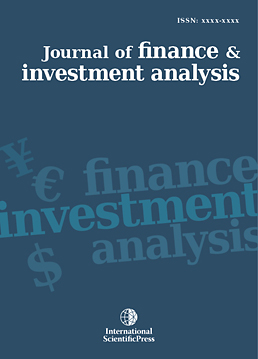Journal of Finance and Investment Analysis
Post-modern portfolio theory supports diversification in an investment portfolioto measure investment’s performance
-
 [ Download ]
[ Download ]
- Times downloaded: 13748
-
Abstract
This study looks at the Post-Modern Portfolio Theory that maintains greater diversification in an investment portfolio by using the alpha and the beta coefficient to measure investment performance. Post-Modern Portfolio Theory appreciates that investment risk should be tied to each investor’s goals and the outcome of this goal did not symbolize economic of the financial risk. Post-Modern Portfolio Theory’s downside measure generated a noticeable distinction between downside and upside volatility. Brian M. Rom & Kathleen W. Ferguson, 1994, indicated that in post-Modern Portfolio Theory, only volatility below the investor’s target return incurred risk, all returns above this target produced ‘ambiguity’, which was nothing more than riskless chance for unexpected returns.
